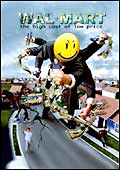|
T
hese days, calliope is most easily (and commonly
found) in call centres (or business process outsourcing firms,
BPOs or companies in the business of it enabled services, ITEs;
abbreviations, as you can guess, Constant Reader, are sure signs
that a business has arrived). India's ITEs firms employ around
350,000 people and earn revenues of $5.2 billion (Rs 23,400 crore)
a year. By March 2009, these numbers are expected to touch 11,00,000
and $25 billion (Rs 1,12,500 crore), according to Nasscom, India's
software and ITEs lobby. Meanwhile, they (the ites firms) have
gone and got themselves a voice in fiction, cinema, and soaps
(if all goes well, happening ITEs will supplant weepies at the
TRP listings). This is the mise en scene of the times.
 There
is a reason for this. Most BPOs work nights to leverage the time
difference with the US. Despite the economic benefits of the business
(both to the individual and the nation), the shadow of exploitation
is never far away from ITEs. Add other strands such as the long-term
ill effects of working nights (both physiological and psychological),
the high attrition rates in the industry and the fact that some
of the information BPO workers deal with is confidential or sensitive,
and the result is a fertile hunting ground for writers and filmmakers
looking for ideas. "There is a kind of transient euphoria
and tension in the subject that is attractive to filmmakers,"
reckons noted film theorist Madangopal Singh. There
is a reason for this. Most BPOs work nights to leverage the time
difference with the US. Despite the economic benefits of the business
(both to the individual and the nation), the shadow of exploitation
is never far away from ITEs. Add other strands such as the long-term
ill effects of working nights (both physiological and psychological),
the high attrition rates in the industry and the fact that some
of the information BPO workers deal with is confidential or sensitive,
and the result is a fertile hunting ground for writers and filmmakers
looking for ideas. "There is a kind of transient euphoria
and tension in the subject that is attractive to filmmakers,"
reckons noted film theorist Madangopal Singh.
For instance, there's John & Jane, a documentary
that was well received at the Toronto Film Festival and focusses
on the lives of six people working for a call centre in Mumbai.
It is about the make-believe world call centre executives live
in at work, their accents and attitudes more a reflection of the
US than India. The more dangerously an employee slips into the
make-believe, the better he or she performs. "Its like, oh
man, I don't want to be Indian anymore," says Nikesh, aka
Nicholas at one point in the movie. "We may take this industry
for granted but around the world, this is a subject for serious
discussion from a cultural and metaphysical point of view,"
says Ashim Ahluwalia, the documentary's director.
 |
"We may take this industry for
granted but around the world, this is a subject for serious
discussion"
Ashim Ahluwalia
Director/John & Jane |
If John & Jane is a cerebral look at a
business that has legitimised the night, then One Night @ The
Call Center, a book by Goldman Sachs investment banker Chetan
Bhagat, is a love story replete with bad bosses, stymied creativity,
and work conditions that are, at once, both great and not so.
As one of the book's characters remarks, an air-conditioned sweat
shop is still a sweat shop. For two years, claims Bhagat, he snuck
into call centres, hitched rides on the infamous Qualises (the
vehicles of choice to ferry employees to work and back), and talked
to friends and relatives (five cousins and two sisters-in-law
work for call centres). "I wanted to focus on how there is
an exciting setting but with monotonous work," explains Bhagat.
In just a month since its launch, Bhagat's book has sold over
100,000 copies in India (an unheard-of number for an English language
book).
American Daylight, a motion-pic awaiting release,
is another love story, albeit one where the female protagonist
Sue (Sujata) who works in an Indian call centre helps the male
protagonist Lawrence, a rich American who wants to stop his wife
from pushing him into bankruptcy with her extravagant spending.
Lawrence falls in love with Sue, but the most intriguing thing
about American Daylight is that just as Sue helps Lawrence by
sharing details of his wife's transactions (which she was not
supposed to), a few employees of MphasiS, an it and ITEs firm,
helped themselves to money in the accounts of some American customers
not too long ago. The very fact that call centres deal in sensitive
and confidential information makes them that much more interesting
settings for books and motion pictures.
| TAKING ON BIG BUSINESS |
|
For 100 minutes, you can choose
to watch a man called Morgan Spurlock as he stuffs himself,
voluntarily of course, with fast food from McDonald's three
times a day for a prolonged period of time and then gauges
its impact on his body. The outcome is a no-brainer: as fast
food from the golden arches takes its toll, his health parameters
plunge southwards. Spurlock's protest film, Super Size Me
(released in 2004), is not the first Big Business bashing
documentary to be made. One of the early onslaughts was crafted
by none other than Michael Moore (yes, Dubya's bete-noire)
who back in 1989 made a documentary on what happened in his
hometown when General Motors closed down a plant. Roger and
Me was loosely based on Moore's attempt to meet and interview
Roger C. Smith, GM's Chairman then, an era when the company
was making record profits. Today, as the auto giant struggles
to be on its feet it will make an unlikely target for guerrilla
filmmakers like Moore. But there are fat targets elsewhere.
The title of Robert Greenwald's new documentary, Wal-Mart:
The High Cost of Low Price says it all and the film, acclaimed
in vast swathes of the blogosphere, takes on the world's biggest
corporation. And, oh yes, it tackles issues like how the giant
that Sam Walton built has squeezed small traders, employed
staff at rock-bottom wages and cannily scoured the earth to
buy cheap. All because it wants to offer customers the lowest
prices. Now, is that a good thing or a bad thing? |
 |
 |
"The call centre theme is powerful
enough to start finding echoes in comic-books and mainstream
cartoon strips"
Bobby Bedi
Managing Director/ Kaleidoscope
Entertainment |
"The call centre revolution
has engendered a new economic class, and this is something
that is bringing about changes in the entire social fabric"
Shailaja Kejriwal
Senior Creative
Director/ Star Network |
"We were looking at a youth show revolving
around the work place and call centres have tremendous social
ramifications," says Shailaja Kejriwal, Senior Creative Director,
Star Network, referring to the reasoning behind a new show on
Star One, India Calling, that deals with the life of Chandni Kapoor,
a young woman from Jallandhar with a penchant for bright orange
dresses, and working for a Mumbai-based call centre. The way Kejriwal
sees it, the call centre revolution has engendered a new economic
class, and this is something that is bringing about changes in
lifestyle, attitudes and beliefs, and the entire social fabric.
"(It is about) disproportionate or pretend purchasing power
where the conventional rules get challenged," says Santosh
Desai, President, McCann Erickson. India Calling, says Kejriwal,
will reflect this change.
 |
 |
"I wanted to focus on
how there is an exciting setting but with monotonous work"
Chetan Bagat
Investment Banker/
Goldman Sachs |
In terms of economics, call centres make sense
for all parties concerned. When viewed on the cultural and social
frame, however, the gains aren't that obvious, one reason why
John & Jane director Ahluwalia calls what happens in them
"an uneasy transaction in a post-modern world." "A
new world is emerging," says Bobby Bedi, Managing Director,
Kaleidoscope Entertainment, the company behind American Daylight,
adding that the call centre theme is powerful enough to start
finding echoes in comic-books and mainstream cartoon strips. And
such works will find a ready market, explains Kiran Karnik, president,
Nasscom. "(ITEs is) a visible industry with a large target
audience among the youth." One that enjoys consuming the
stories of people caught between American nights and Indian mornings.
|






 There
is a reason for this. Most BPOs work nights to leverage the time
difference with the US. Despite the economic benefits of the business
(both to the individual and the nation), the shadow of exploitation
is never far away from ITEs. Add other strands such as the long-term
ill effects of working nights (both physiological and psychological),
the high attrition rates in the industry and the fact that some
of the information BPO workers deal with is confidential or sensitive,
and the result is a fertile hunting ground for writers and filmmakers
looking for ideas. "There is a kind of transient euphoria
and tension in the subject that is attractive to filmmakers,"
reckons noted film theorist Madangopal Singh.
There
is a reason for this. Most BPOs work nights to leverage the time
difference with the US. Despite the economic benefits of the business
(both to the individual and the nation), the shadow of exploitation
is never far away from ITEs. Add other strands such as the long-term
ill effects of working nights (both physiological and psychological),
the high attrition rates in the industry and the fact that some
of the information BPO workers deal with is confidential or sensitive,
and the result is a fertile hunting ground for writers and filmmakers
looking for ideas. "There is a kind of transient euphoria
and tension in the subject that is attractive to filmmakers,"
reckons noted film theorist Madangopal Singh. 





